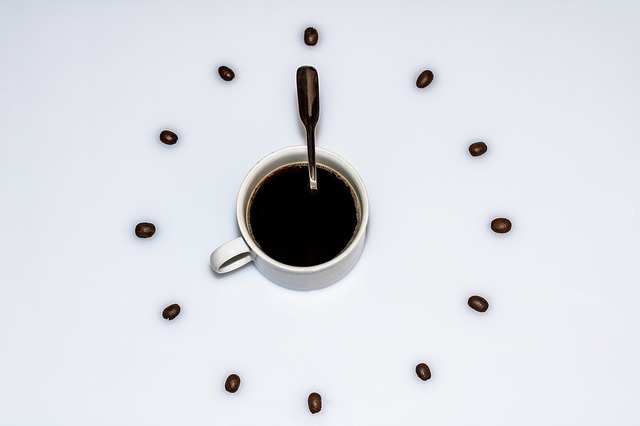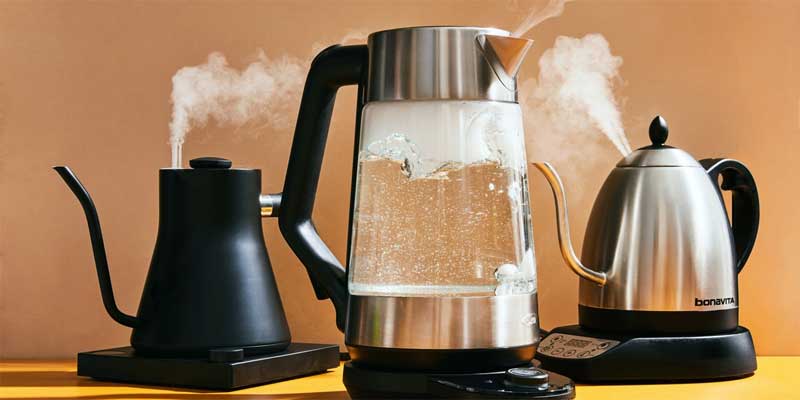Generally, people are starstruck when they learn that it requires thousands of dollars to compile the necessary machines and tools a Barista uses to brew a Cappuccino. I’ve met people who have build such setups in their households for their morning and evening coffee. It is mind-boggling, considering the amount of both manual and financial maintenance which is required for such setups.
The two main advantages of building such setups for coffee shops are maintaining the quality of the espresso and the time efficiency while preparing the orders. Keep in mind that the taste of the coffee and how long a customer who needs to wait for a cup of coffee will greatly influence how well a coffee shop performs. There are numerous ways to replicate your favorite beverage at home with some affordable tools.
To make espresso-based coffee you’d need:
- Espresso Maker
- Scale
- Burr Grinder
- Milk Frother/Steamer
- Thermometer (optional)
- Kettle (optional)
- Jug (optional)
ESPRESSO MAKER
If you are searching for an Espresso Maker that can be consistent enough for your taste, I would recommend either a Rok Presso or flair. When used properly, both will be able to produce beautiful espresso which can be compared to one another. Deciding on which to get would depend on your daily activities. If you don’t travel a lot, a Rok Presso would suit you just fine. As it is quite heavy and you wouldn’t be carrying it around. Flair is lighter and actually comes with a portable case making it easier to travel with. The only downside of using either of the two is the maintenance. It would require you to dismantle and clean everything which will take some time and is not practical if you are someone who is always in a hurry.
Another alternative which is both cheaper and easier to maintain is an Aeropress. It is easily maintained and light enough to carry around. The Aeropress would fit you well if you travel a lot. However, to be able to continuously produce consistent espresso will require a lot of practice. It might troubled you at first but once you get used to it there shouldn’t be any problems.
The last espresso maker I'd like to enlist today is not designed to brew espresso effectively. It is the the Moka Pot. The advantages a Moka Pot is that it’s easy to use and very cost-efficient if you are on a budget. The downside of the Moka Pot might be unsettling for most. As the espresso brewed from it tends to be very harsh as it is over-extracted.
MILK FROTHER
You also have the choice of frothing your milk manually. Preheating your milk with either in a pot or a kettle once your milk has been heated to a temperature of 68°C – 74°C (155°F – 165°F). Then frothing it using either a Milk Frother or a French Press.
MILK STEAMERS
The fundamental purpose behind steaming your milk is to heat it up to a temperature between 68°C – 74°C (155°F – 165°F). There are two efficient techniques you could use to steam your milk at home without a steamer that is equipped with a boiler. If you spend some extra cash you could get yourself a digital steamer that isn’t equipped with a boiler. Such as the Welhome MS-130D Steamer. Another alternative is to get a stovetop steamer. It would only require a heat source which would be a stove. The latter is not as efficient when compared to the former. As everything is manual and you would need to be cautious and conscientious while operating one.
BURR GRINDER
As a Barista, I will always recommend you to grind your bean fresh. You always have the choice of asking the barista or the roaster you’ve bought your beans from to grind them for you. However, I highly recommend you to get a Burr Grinder or even a Hand Grinder. Especially if you don’t mind manually grinding your beans to get the best results possible. another advantage of getting yourself a grinder is that you can change the grind size depending on how you will be preparing your coffee.
SCALE
Having a scale is mandatory to make a coffee. There is no way around it, you need to dose your coffee. Each method of brewing will use different doses. Some needs more than the others. Without a scale it will be impossible for your coffee to be consistent. You don’t need a state of the art scale. Any scale will be perfect as long as it’ll measure accurately to the gram. Below I will list the dosage of coffee I will recommend using different methods:
- Rok Presso - 14gr – 16gr
- Flair - 17gr – 19gr
- Moka Pot - 20gr – 22gr
- Manual Brew - 15gr – 20gr
- Tubruk Coffee -10gr – 20gr
KETTLE, THERMOMETER and JUG
These items on the list are completely optional. The result you end up with will differ slightly between each brew. However, there are measurements you can make which can help you brew as consistent as possible.
- Thermometer
Without a thermometer, it will be nearly impossible to predict the temperature of the water. It’s not perfect, but you can get around this by using either a pot or a kettle to heat up the water till it boils. Once it boils, you need to set it aside for roughly a minute depending on how much water you’ve boiled and for how long it should be within the range of 88°c – 95°C (190°F – 203°F). - Kettle
As mentioned above, it doesn’t matter how you heat up your water as long as you can get it up to the right temperature. You would only need a gooseneck kettle for manual brewing. - Jug
If you plan on practicing your latte art skills then you will need a jug. Otherwise you can use any sort of container to steam/froth your milk and just pour it into your espresso.


I am surprise it cost thousands of dollars and great knowledge to brew a great cup of Cappuccino but I am sure it worth it.:)
It was surprising to me at first as well but it is all worth it when people appreciate everything that goes on behind the bar